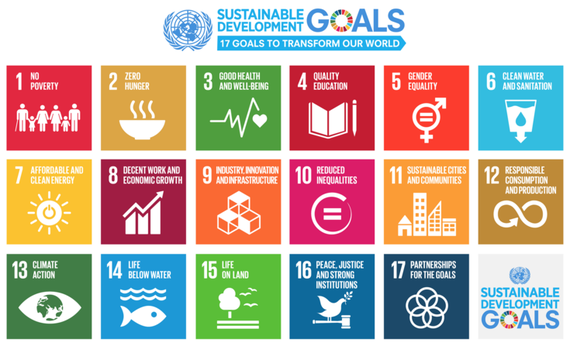They are the questions of boardroom conversations: "What is the next BIG thing?" "What should we be making or providing NEXT?" "Where is the market going and how can we meet that need faster, better and more profitably than our competitors?"
Fortunately for business we have the answer. Actually, we have 17 answers, in the form of the U.N. Sustainable Development Goals. These provide a framework of global needs that businesses ought to recognize represent 17 winning strategies to win market share (as well as hearts and minds). This is the promise and opportunity of sustainable development and any corporation that considers itself responsible (to its employees, customers, suppliers, communities, etc.) will do well to look at the list; as well as the detail offered under each goal and use these not only to define the language they use around their corporate responsibility efforts but also their next strategic plan.
More than just your language
It is not enough to adopt the language of the Development Goals into your corporate responsibility (CR) efforts (although at a minimum, failing to do so is a massive lost opportunity). They provide the basis for developing the necessary linkage between CR strategy and the organization's overall strategy. Ensuring that this linkage is real (and not just done for appearances sake) is one of five keys that I have developed over my years in business to unlock to full potential of a CR program to build a business that is successful over time (sustainable).
Rethinking your business
First you have to look at the business you are in. And it cannot just be the products or services you provide. Your business is providing people with the benefits that those goods or services bring to their lives. So automakers are NOT in the business of making cars; they are in the business of providing people with personal transportation that is safe, reliable, comfortable ... and a host of other attributes (including efficiency, cleanliness, style, luxury, convenience, etc.) important to drivers and passengers. So, businesses need to rethink the value proposition of the business they are in and get out of the 18th century mindset that production (producing-more-and-more) is the only way to drive profit and into the new reality that meeting peoples' needs may through better, more efficient, less resource intensive ways to achieve the same result (think Uber).
Change can be scary. Especially for those who have been successful doing things the same old way. But entrepreneurs have traditionally succeeded (where others have failed to try) by embracing not the threat but the opportunity that new challenges present. The Sustainable Development Goals, more than anything else, lay out a framework for innovation and opportunity by finding profitable solutions to those challenges.

